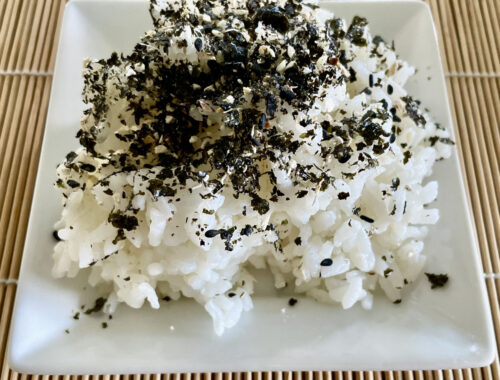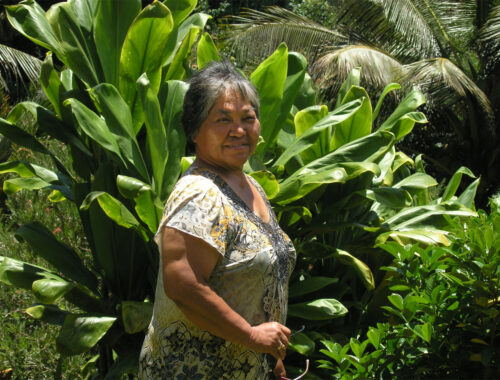
Medicinal Plants from the Garden—Lemongrass: A Hawai‘i Island Garden Staple

By Brittany P. Anderson
Bowls of creamy red curry teeming with chunks of kabocha squash, eggplant, and green beans quickly leave the kitchen. The cook expertly ladles from an oversized pot, choosing the perfect amount of vegetables and broth while avoiding the aromatic spices floating at the top.
The entire restaurant smells of sweet heat and citrus that only increases as the bowls of curry are shuttled to eager diners.
Lemongrass is one of the key fragrant spices used in Thai curry and other Asian cuisines. For thousands of years, lemongrass has been flavoring soups, curries, and teas. The plant provides a light citrusy flavor and aroma to dishes and benefits the body as well as the Hawai‘i Island garden.
Commonly mistaken for a weed, lemongrass grows in thick clumps of stiff, upright stalks with green bladelike skinny leaves. As its name suggests, it looks like an unassuming tuft of grass–until you brush against it and release its lemon scent.
A native of Asia, Africa, and Australia, lemongrass thrives in tropical locations like Hawai‘i Island because it enjoys full sun and damp soil. Cultivation is relatively easy for even the novice gardener. The stalks can easily be divided from the clump and take root quickly once replanted.
Within the Hawai‘i Island garden, lemongrass offers three distinct benefits—soil retention, mulch, and pest control. When planted along slopes, lemongrass clumps help prevent soil erosion and bolstering terraced landscapes—if using it as a border for sloped garden beds, regularly trimming the lemongrass prevents the clump from taking over and provides an endless supply of green mulch.
In addition to being a lovely scent, the blades of the lemongrass are a wonderful green mulch that helps keep the soil cool while adding to overall soil health. One of the best uses for lemongrass in a Hawai‘i Island home garden is its ability to ward off mosquitos.
Gardening in the middle of the day under the hot Hawai‘i Island sun is absolutely brutal. As the sun starts to go down, it’s the most pleasant time to transplant young vegetable starts or take a stroll about the yard. Unfortunately, mosquitos favor that time as well—that is, unless you have lemongrass planted nearby.
Lemongrass contains citral and geranyl acetate, which are both very effective at repelling mosquitoes. Rustling the blades of lemongrass releases the natural compounds warding off pesky insects so you can enjoy your evening.
The benefits of lemongrass go beyond the garden gate and the dinner table; it is a strong remedy for the body. Lemongrass is rich in folic acid, folate, zinc, magnesium, copper, potassium, iron, phosphorus, manganese, calcium, and vitamins A, B, and C. It is no wonder that lemongrass has been used for centuries in Ayurvedic medicine.
Lemongrass tea, brewed from the leaves and tough stalk, acts as a tonic for reducing joint pain, boosts the immune system, and aids with digestion. Lemongrass is recognized for its remarkable antifungal and antibacterial properties and for helping the body combat bacteria and viruses. Scientific studies also show that drinking lemongrass tea can help stop the growth of some cancer cells.
In mystic traditions, it is used to provide clarity and remove mental blockages. More than just a remedy, drinking tea made from the fragrant grass promotes homeostasis to keep you healthy. It is noted that pregnant women should not use lemongrass tea and oil. Always speak with your primary care provider before using lemongrass to treat what ails you.
Lemongrass essential oil smells bright and energizing, while the tea tastes light and lemony with a hint of ginger. The whole stalk can be added in soups and curries, but remove it before serving because the tough stalk is inedible. To release more of the delightful lemon flavor, pound or bend the base.
The outer layers of the lemongrass stalk can be peeled back like an onion to the tender core. This inner portion is more easily chopped for tea or made into a paste with a mortar and pestle.
To make lemongrass tea, steep any and all parts of the plant in boiling water for several minutes. It is delightful hot or cold, with its lemony flavor without any of the acidity that accompanies lemon. ❖



